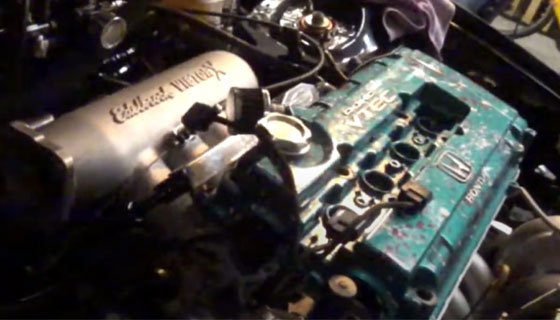For example, if the coolant needs to be replaced every two years or every certain mileage (such as 50,000 kilometers), then the entire cooling system will usually be inspected at the same time as the coolant is replaced, including functional testing and visual inspection of the
1. Component wear: Long-term non-maintenance will lead to increased wear of mechanical components such as bearings and seals inside the water pump, affecting the operating efficiency and life of the water pump, which may eventually lead to failure of the water pump.
2. Decreased cooling performance: Abnormal water pump function will affect the coolant circulation, causing the battery pack, motor or other important components to not be effectively cooled. This will not only reduce the performance of the electric vehicle but may also lead to accelerated battery decline and motor damage due to overheating. And other issues.
3. Increased risk of potential failure: If blockage or leakage in the cooling system is not discovered and dealt with in time, it may cause more serious electrical or mechanical failures, or even endanger safety, such as battery thermal runaway.
4.
Shortened service life: Lack of maintenance will significantly reduce the service life of water pumps and other related components, increasing repair costs and the risk of unexpected downtime.
Electric vehicle water pump(EWP) maintenance steps
Although the electric vehicle water pump is not as complex as the engine coolant circulation system in internal combustion engine vehicles, it also bears the important task of providing coolant circulation for the battery thermal management system, motor cooling system or air conditioning system.
1. Regularly check the coolant status:
○ Check whether the coolant level is within the specified range. If it is insufficient, add or replace it according to the manufacturer's recommended specifications.
○ Ensure that the coolant is of good quality, does not contain impurities, and has not aged or deteriorated excessively.
2. Functional testing:
○ With the support of professional equipment, the working status of the water pump can be detected through diagnostic tools to confirm that it is operating normally and has no abnormal noise, vibration or overheating.
3. Appearance and connector inspection:
○ Check the outside of the water pump for signs of leakage, whether the belt (if applicable) is worn or loose, and whether the fasteners are tight.
○ For the electric water pump's wire connection, ensure that the connector is not corroded, loose or damaged to prevent electrical faults and short circuits.
4.Performance test:
○ When conditions permit, indirectly evaluate the working performance of the water pump by measuring the output flow of the water pump or observing the heat dissipation efficiency of the cooling system.
5. Periodic disassembly and maintenance:
○ Carry out periodic disassembly and maintenance according to the time or mileage recommended by the manufacturer, such as replacing seals, bearings and other wearing parts.
○ Clean internal deposits to avoid clogging and affecting coolant flow.
6. System cleaning:
○ If there is accumulation of impurities in the cooling system, it may affect the operation of the water pump, so the entire cooling system needs to be cleaned in time and the filter (if any) needs to be replaced.
7.Software update:
○ For electric water pumps with electronic control unit (ECU) monitoring, keep the ECU software version up to date to optimize the pump’s operation strategy.
For 12v electric water pumps, 24v electric water pumps, and electric water pump maintenance methods for other models, you can refer to the above methods.
※ The water pump maintenance of electric vehicles should be carried out by professional maintenance technicians according to the maintenance manual provided by the vehicle manufacturer to ensure that the operation is correct and meets the requirements of the warranty policy.

Leave a Reply
Your email address will not be published. Required fields are marked *